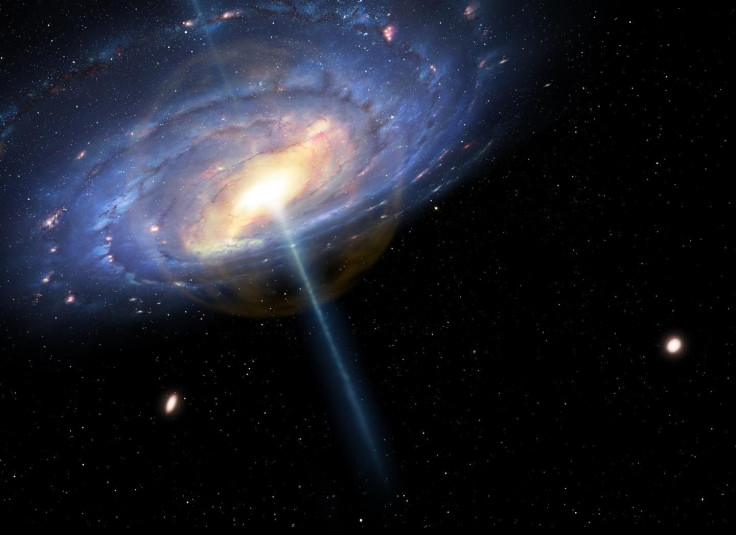Milky Way’s ‘Blowout Bash’ 6 Million Years Ago May Explain Where Its Missing Mass Is

Scientists have long known that there is something amiss with their current understanding of the composition of the Milky Way — the galaxy we call home.
Painstaking measurements of the cosmic microwave background — the omnipresent radiation that is the afterglow of the Big Bang — tells us that a sixth of all matter in our galaxy is ordinary, while the rest is dark matter. However, if we add up the mass of all the stars, gas and dust we can see, it only comes up to roughly 65 billion solar masses — way below the 150 to 300 billion solar masses it should be.
A new study published in the latest edition of the Astrophysical Journal Letters may have finally explained where all this missing mass is — it is too hot to be seen.
“We played a cosmic game of hide-and-seek. And we asked ourselves, where could the missing mass be hiding?,” lead author Fabrizio Nicastro, a research associate at the Harvard-Smithsonian Center for Astrophysics, said in a statement released Monday. “We analyzed archival X-ray observations from the XMM-Newton spacecraft and found that the missing mass is in the form of a million-degree gaseous fog permeating our galaxy. That fog absorbs X-rays from more distant background sources.”
XMM-Newton is an X-ray space observatory launched by the European Space Agency in 1999. The spacecraft is equipped with three telescopes capable of detecting and studying celestial X-ray sources.
When the researchers compared the X-ray absorption data gathered by the spacecraft with computer models of distribution of normal matter across the Milky Way, they discovered that their observations couldn’t be explained by a smooth, uniform distribution of gas. This led them to conclude that there is a gasless “bubble” at the Milky Way’s centre — the region where its supermassive black hole Sagittarius A* is.
According to the study, creating this 40,000 light-year diameter bubble would have required a staggeringly huge amount of energy. This energy could only have come from the black hole’s feeding frenzy, which they surmise took place roughly 6 million years ago.
During this phase, some infalling gas was swallowed by the black hole, while the remaining was pumped out at a breakneck speed of nearly 2 million miles per hour. Some of the material that flowed toward the black hole later accreted to create stars.
The researchers say the mass of this hot gas adds up to roughly 130 million solar masses, which removes the discrepancy between what’s been observed so far and what measurements tell us the total mass of the Milky Way should be.
Moreover, their arguments are also corroborated by the presence of six-million-year-old stars near the galactic center.
“The different lines of evidence all tie together very well,” co-author Martin Elvis, also from the Harvard-Smithsonian Center for Astrophysics, said in the statement. “This active phase lasted for 4 to 8 million years, which is reasonable for a quasar.”
© Copyright IBTimes 2024. All rights reserved.






















